For my professional development, I will plan and explore a career trajectory that will enhance my understanding and practice as an informed specialist creative practitioner. In order to do this, I will investigate and synthesise different concepts of professional practices in regard to my chosen creative pathway and development as a professional. I will also analyse and evaluate other professional practice roles and responsibilities either independently or as part of a team in my developed professional design environment. As part of my development and response to a creative career, I will also reflect and evaluate my skills both personally and professionally as well as compare them to those required by different career pathways. In the development of my professional practice, I will as look at the key issues that affect my pathway such as economy, culture, and ethical concepts.
To plan my career trajectory I have done some research into what careers/ pathways I could do with my degree after graduation. I first simply searched this is google to see what the top results were, These included:
- Art Director
- Creative Director
- Drafter (architecture and engineering)
- Film and Video Editor
- Graphic Designer
- Industrial/ Product Designer
- Marketing Manager
- Multimedia Artist/ Animator
- Web Designer
From having a look at what areas I could potentially go in to as well as others I was already aware of from my course and talks with my lecturers such as Junior Designer, completing a PGCE (post-graduate certificate in education) and having a small freelance design/ illustration business. I made a mind map of the options available to me that I would consider pursuing.

After some consideration, the options that I have decided to research more are:
- PGCE
- Small self-employed graphic/illustration craft business
- Exhibition Designer
I want to learn more about these areas as I believe they all pathway that I would like to learn more about and feel I would be most interested in doing. I feel that by doing a PGCE I would gain an academic skill that would open up more opportunities in both teaching in a school as well as lecturing in many different settings such as in museums, galleries, outdoor education (ranger) and many other environments. By looking into a small creative business it would give me an opportunity to be creative, follow freely a design style and subject I would want to do, be a way to earn an income as well as be something I could do flexibly with another job or academic pursuit. Lastly, I would like to explore exhibition design as it is something I have always been interested in and I enjoy spending most of my time around gallery and museum exhibitions. Exhibition design would allow me to both use my graphic skills as well as develop them along with new skills I other software and interior design.
I’m less inclined to do company work as a junior designer as I think I would find it hard to connect with projects that I don’t believe in, for example, “a project for encouraging mass deforestation and animal cruelty or Politics”. It is something I would consider purely for the need to have a paying creative job but it isn’t the career plan I would like.
I have researched into the three of my top professional developments to see what they involve, what skills are required, furthermore what skills I am required to have to meet their needs and the roles responsibilities and key issues of each pathway.
The first pathway I have looked into is that of a PGCE. A PGCE (postgraduate certificate in education) can be completed by doing a one-year full-time academic course or a two-year part-time academic course that combines both academic studies with practical teaching sessions. To receive a PGCE you have to complete an undergraduate degree first, but your undergraduate subject doesn’t always need to be in a subject relevant to the focus of your PGCE. In England, you don’t need to have a PGCE you just need to have a QTD (qualified teacher status) and the PGCE is an additional qualification you can achieve in addition to having a QTS. In Scotland and Northern Ireland as well as several other countries abroad you will need both A PGCE and QTS to be recognised and register as a qualified teacher. Although in England you don’t need to have a PGCE I think it’s a beneficial qualification to have and gives you the freedom and security to be able to apply for jobs outside of England. With a PGCE you can train to teach a specific subject like English, Arts or Maths for example or train by age groups; Early Years (5-11), Primary (3-7), secondary and Further/Adult Education. When studying a PGCE things I would learn would include professional teaching which explores the key issues in teaching and learning environment. As well as a subject specialty which build on your subject knowledge, learning key theories, policies and practice to give teaching skills. Lastly how to reflectively assess and evaluate your skills and working methods to best teach.
The entry requirements to do a PGCE are:
 The cost of doing a PGCE in Sheffield through either The University of Sheffield or Sheffield Hallam University is currently £9,250 for a one year course with the possibility of a £9,000 bursaries in Art and Design subjects. The University of Sheffield also list example of additional costs on their website which include,
The cost of doing a PGCE in Sheffield through either The University of Sheffield or Sheffield Hallam University is currently £9,250 for a one year course with the possibility of a £9,000 bursaries in Art and Design subjects. The University of Sheffield also list example of additional costs on their website which include,
 A PGCE in England does not guarantee a job once your course is complete unlike Scotland which has a Teacher Introduction Scheme “which offers a guaranteed one-year training post to every eligible student graduating with a teaching qualification from on of Scotland’s universities”
A PGCE in England does not guarantee a job once your course is complete unlike Scotland which has a Teacher Introduction Scheme “which offers a guaranteed one-year training post to every eligible student graduating with a teaching qualification from on of Scotland’s universities”
(prospects.ac.uk, Rachel Swain, October 2019)
By obtaining a PGCE it also open to opportunities working in a non-school environment such as working in museums and galleries as Education Officers as well as providing learning in an outdoor education role.
After researching what a PGCE involves, costs and requirements I think doing the qualification would be a positive pathway to follow with several opportunities available after completion. I feel less drawn to being a mainstream teacher though as I do not know what age group I’d feel comfortable teaching as I have limited experience with school children. I’m really interested in the other opportunities that can come from having a PGCE like being an Education officer in places of culture such as museums and galleries. I like that they would give you the freedom to address and inspire all age groups with different and ever-changing subjects and exhibitions. I approached the University of Sheffield to discuss if I would be able to do a PGCE while I work part-time as I didn’t want to be penalized if I missed lectures and couldn’t always keep my attendance due to working. Their response was it is only advised that during their one-year full-time course student work a maximum of 16 hours per week although I would be eligible for a bursary to relieve financial burned. They also informed me that I would occur warnings if I missed three lectures in a row and may be difficult to do placement for extended periods of time. As I currently I’m contracted to18.2 hours per week I would be stretching myself and it may become too much to cope with by doing both the degree and working. I do enjoy the stability from my job as rent privately and have bills to pay so if I was to reduce or leave my job I would have to consider the financial impact this may have. I do believe I may be able to pursue the course but I am aware of the risks and burdens involved in a course that requires a lot of commitment. The other information that came to light during my research that I have taken extra thought over Is that Scotland’s Teacher introduction Scheme has a lot of benefits in comparison to England where you are not guaranteed any work or experience on completion. As I have family in Scotland and often consider moving back it may be worth considering doing a PGCE either later on in a few years with more experience and financial security but also if I ever was to move.
The second pathway I researched was starting a small business start-up graphic company. Small hand made base business and specialist makers have really taken off in the past few years. An article on Forbes. com reports how the online market place which is aimed at the buying and selling of handcrafted non-mass-produced goods had grown by 30% in 2018 with “The total value of handmade goods, vintage items and crafts supplies sold on its platform rose 20%, to $902 million, as active buyers jumped 17%, to about 36 million. Active sellers, meanwhile, rose 8.1%, to nearly 2 million.” This growth in demand for handmade, recycled and reused goods was rationalized in the same article by the companies CEO Josh Silverman, “We’re living in the sea of sameness, People are buying more and more of the same mass-produced goods from the same few logistics companies, and the world wants an antidote to that.”
(Andria Chang, forbes.com, 2018)
While researching I found the quote “Art and love are the same things: It’s the process of seeing yourself in things that are not you.” – Chuck Klosterman. I think this quote sums up the reason why so many people are both buying and selling hand made or repurposed goods in a time of cultural change and where mass-produced new products don’t hold the same value both economical and culturally. Most people’s day to day needs or regular buys are mass-produced products that are convenient but don’t come with a story or any individual characteristics. I think this makes people numb to their value and aesthetics while something that’s has been made a little ropey with love or been specially designed, made and personalized gives objects characters and story as well as giving the value not so much economically but personally for the amount of time and effort that has gone into its creation whether a card, painting, teapot cozy or log table. A study in the Journal of Marketing by Christoph Fuchs (Technische Universität München), Martin Schreier (WU Vienna University of Economics and Business), and Stijn M.J. van Osselaer (Cornell University) solidifies these ideas as they found “The customer then perceives the handmade product itself to be literally imbued with love.” The study also found that not only were people more drawn and favored to handmade products they also “were willing to pay up to 17% more for handmade items in general”. (American Marketing Association, PHYS.org, 2015)
There is definitely a market for craft business but I want to look into the cost of setting on up. For my proposed small business I would be looking to sell graphic/illustrative cards, posters, prints as well as small homewares such as coasters, pots and personalized items such as cake toppers and party favors for events like parties and weddings. I already have a very large collection of art supplies as well as an iPad Pro and MacBook for designing as well as a printer than can run prototype prints although it is not good enough for high-quality prints. I also have a foil laminated machine to foil emboss paper, card and thin balsa wood. In order to. To produce small homewares I would need to invest in a Circut Maker Cutting machine that cut paper, thin balsa wood, thin acrylic, and vinyl as well as a Circut heat press that can be used for heat transfer on materials like fabric and ink transfers. As well as the machines there are the accessories, materials (vinyl, card, paper, foil) for all of this I have estimated the cost would be around £600 in order to have the means to make the products alone.
I also researched what things you need to know to start a small business such as tax, insurance etc and found this information on simplybusiness.com as well as sellers fees on Esty.

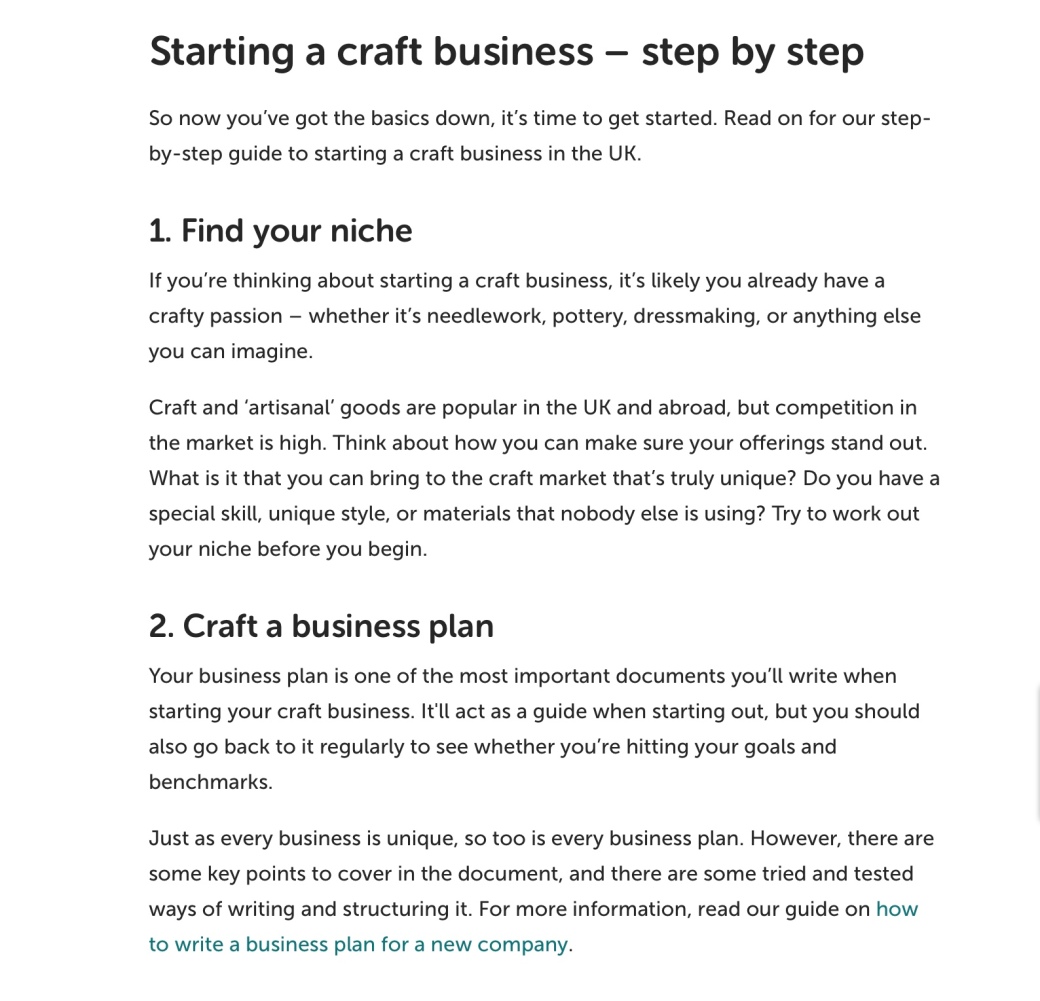


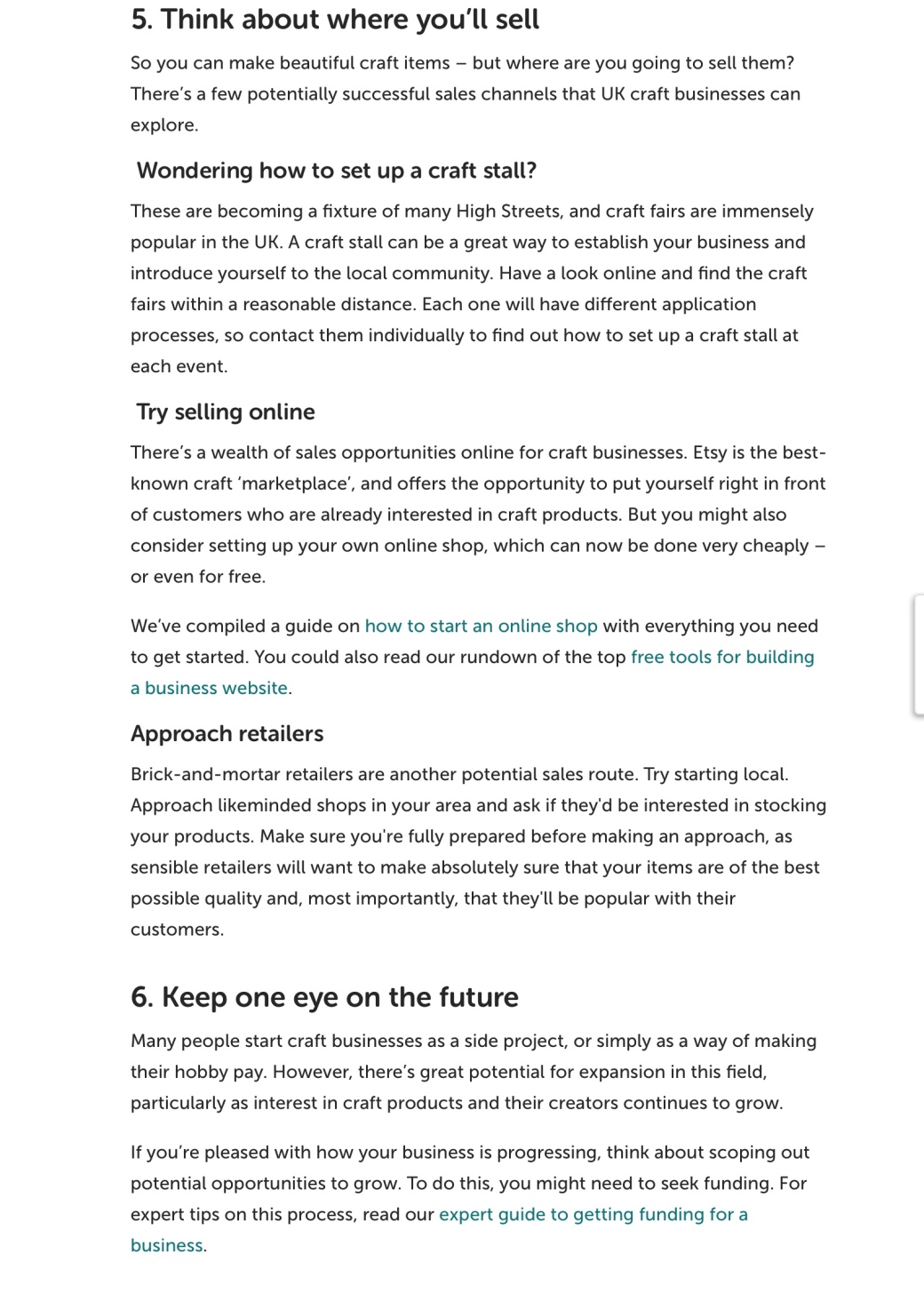
After doing my research I realize there is a lot to look into on how to operate a small business and you need to know how to make sure you have the right insurance to you cover yourself and sort out tax and business status. It is also a great expensive to buy all the machinery and items need in order to produce items to sells. As I do not get to have a solid business plan or a collection to produce this would be a place I would need to start. I am considering buying the Circut cutting machine in a few weeks purely has with my student loan coming next month I will be the only time I can financially make such a large purchase. Buying some items now will also give me an opportunity to explore and create even if it’s just for personal use before I am able and have developed enough to be able to operate as a professional with a business outlet. Due to the current Covid -19 pandemic small business are taking a large hit has shop are closed and people are losing their jobs. Many seem to be pushing online sales to stay afloat but if definitely something to take into consideration as people maybe have less expendable income to spend on small crafts and it’s not a very practical time to start a business yet.
I have throughout my course developed some branding to use to promote myself both as a creative practice and as a small maker business. I have been slowly building a portfolio and recording my work and any opportunities I have taken part in on an Instagram and Facebook account as well as a website. As new and I have made a lot of changes they are not fully completed yet but I hope over the next couple of months to add work and collaboration from the past year.
https://www.instagram.com/natleepea_design
http://natleepeadesign.com/bae34-portfolio
https://www.facebook.com/NatleepeaDesign
Illustration Opportunity with Sheffield Lakeland Trust
I had the opportunity to meet Sarah Poulter the Senior Communications and Engagement Officer for the Sheffield and Rotherham branch of The Wildlife Trust. After meeting Sarah she contacted me in regard to doing some illustration work for the Sheffield Lakeland Landscape Partnership. She sent me an illustration of a recent collection for the clothing company Joules and we discussed doing an illustration in a similar still to post on their social media page. We are still in contact in regards to further collaboration and now the UK is on a national lockdown I’m looking forward to being able to put a lot of time and effort into this partnership.
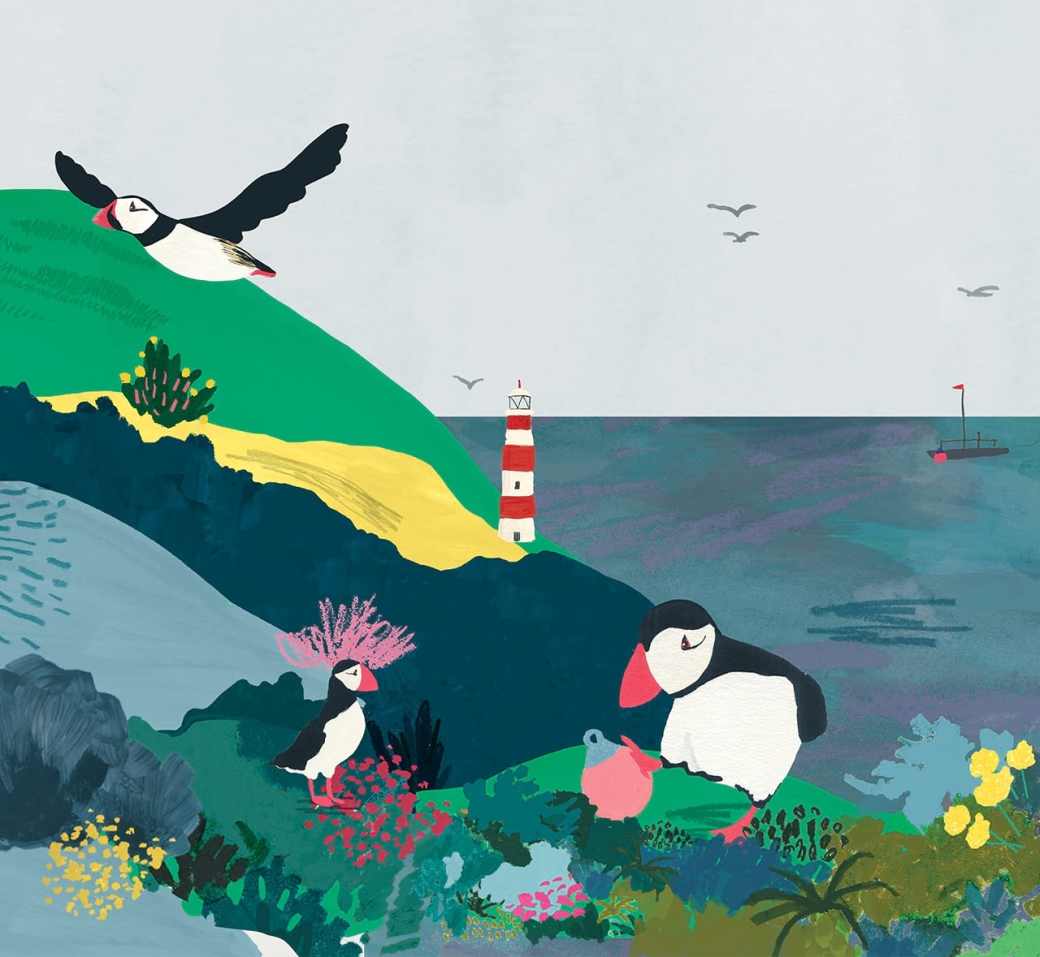
WWW.Joules.com puffin illustration

Enter a caption

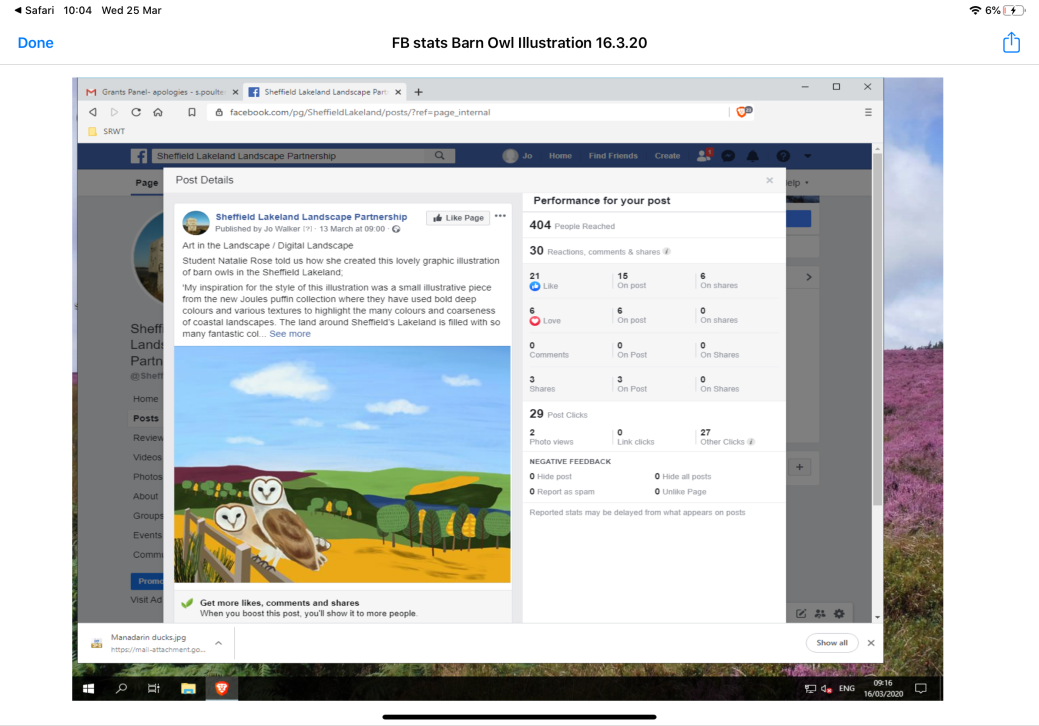
Statics from the Lakeland Facebook Post

Lastly, I have looked into a career that combines both an academic and creative pathway, Exhibitions design. Exhibition designers work to create aesthetic and practical public exhibition spaces, showcasing events, trade shows for industry and education as well as culture and retail exhibitions and displays. The responsibility is not only to create a practical and aesthetically pleasing speaker but also to create something that communicates a client’s concepts and key messages. The responsibilities that include In this role are;

I would very much like to consider and look at more opportunities specifically in museum exhibition design as I think it has a lot more of creative base and hold a lot of interest in the work. I have further researched this role by looking at salary and working hours estimated on the national career service gov website and comparing it to job opportunities found online on indeed. I looked further at the job posted by the National Army Museum which offered £32,766 annual salary and in the job description stated an average of 37 hours per week which is just under the typical working hour but in reality, would probably stretch to the hours given by the government website. They did also state that additional nights and weekends would be required. One thing I did notice when researching opportunities was that the majority of positions were in London or further south with no opportunities in Sheffield or even Manchester or Leeds available. This means that although I may be able to volunteer in the role, there are little to no jobs available currently in my area.

After looking into the role opportunities in looked into the ways you can become an exhibition designer and the skills required. Although I have a graphic design degree I may in to take on a further degree in interior and spatial design to gain certain skills that are also required or preferred. The interior degree course available in Sheffield could mean another 3-4 years of study which could impact potential earning now as discussed in my PGCE research. Other possibility include short course availably from the British Display Society which run for around £325 as well as interior short course held by art societies as shown below.


I do have the basic degree required to pursue this pathway and there are many options to consider to build and learn more skills to become more specialised in the role. This is also the same for my skill set Anne the skills required. Through my art, photography, visual communication and product design qualifications along my graphic design degree i have covered a wide range of skills over the years. Have a daily broad knowledge of the arts as well as artistic drawing skills. My drawing skills are mainly based around still life so extra practice or classes on drawing perspectives and interior architecture would be beneficial. My graphics courses have given me the appropriate skills need to use software such as Photoshop, Illustrator, and Indesign as well as some experience in AutoCAD from A-Level although I would need a refresher in the CAD software. My courses and qualification have also given me the skills to communicate effectively through both design, presentations and reports as well as building on key observation skills. I have also done some freelance illustration for the Sheffield Lakeland trust which has helped me build my skills in working with clients and meeting requirements and working with others. My various customer service jobs and my current position as a Print Room Technician has given me many skills when working in a team, meeting deadline, using my intuition and working under pressure and talking to clients in a positive and professional way.
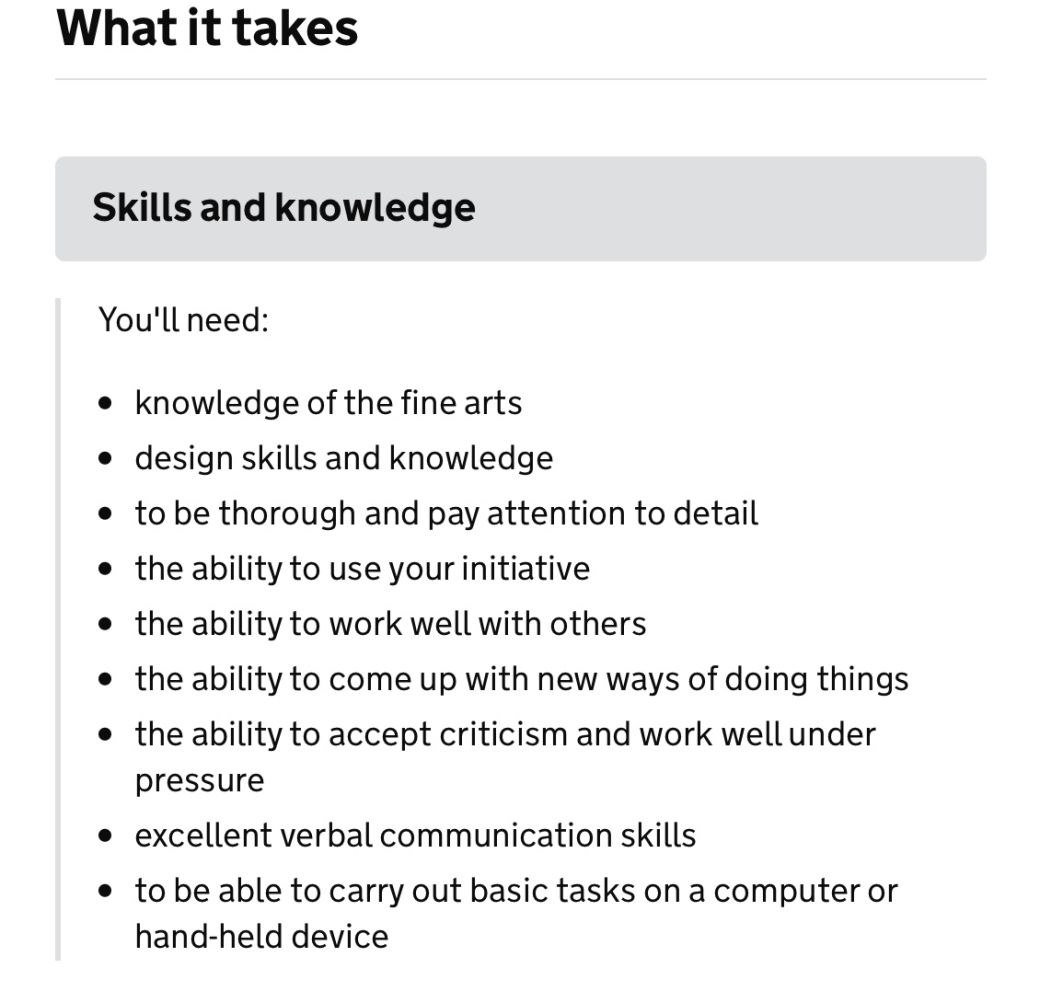
 Evaluation
Evaluation
After looking at the various career pathway I could undertaken with my qualification I think I have plenty of opportunities to develop both personally and professional. I think the three most favorable pathway I researched into all hold positive ways to progress and develop onward either individually or also all together at different stages. With every option there is a lot of financial burdens to consider whether that taking on more student loan debt, only being able to work part-time, volunteering for free or buying equipment. There is also no guarantee with either pathway that I would have a successful career. Currently, there is a large government call for teachers as there is a shortage so that hold to most chances for a job after training. Small business take a long time to build a clientele and there is never a promise of a stable future so that is an option that I believe would be better worked at slowly but with quality over time. A career in exhibiting design is the pathway I’d most like to take and I think I would need to take some time in deciding and doing more research in whether the best option going forward would be taking another degree, short courses or trying to volunteer in my days off work. As I discussed then opportunities seem much lower in the north and due to the current pandemic which has led to the closing of all museums and galleries I may have to wait until it is over and they have reopened to try and build connection as well as find any volunteering opportunities to develop down this pathway any further. In the meantime, I plan to work in my drawing and software skills as well as build my knowledge though books and blogs on roles, and any benefits and informing information. I hope to continue my work with the Sheffield Lakeland project and hope that my upcoming work for my major project on pollinators will be something they may even use and publish. One of the most important things I need to develop is definitely my confidence though as I know I have let some opportunities slip past me because I struggle to feel confident enough to produce work and follow up on opportunities. This is also why I have yet to build a professional CV and apply for placements and jobs within the industry. I know it’s a tough and critical industry but I need to remind myself that I have had and do have opportunities to take part in and that like the Lakeland Trust I was approached to take part and work with them. I have also had work displayed several times in galleries so I am good at what I do and by actively pursuing appropriate pathways, courses and taking the time to build on my skills I will gain the confidence and self reassurance that I need. I hope from this point to develop personally and grow into an art style and way of working that I am comfortable and reflects me. From this, I hope I will have more to show from a professional viewpoint by the end of the summer (taking into account the effects of the current pandemic). I think whatever path I take I will enjoy it and be happy with my decision as long as it is something that is full of interest and curiosity.





